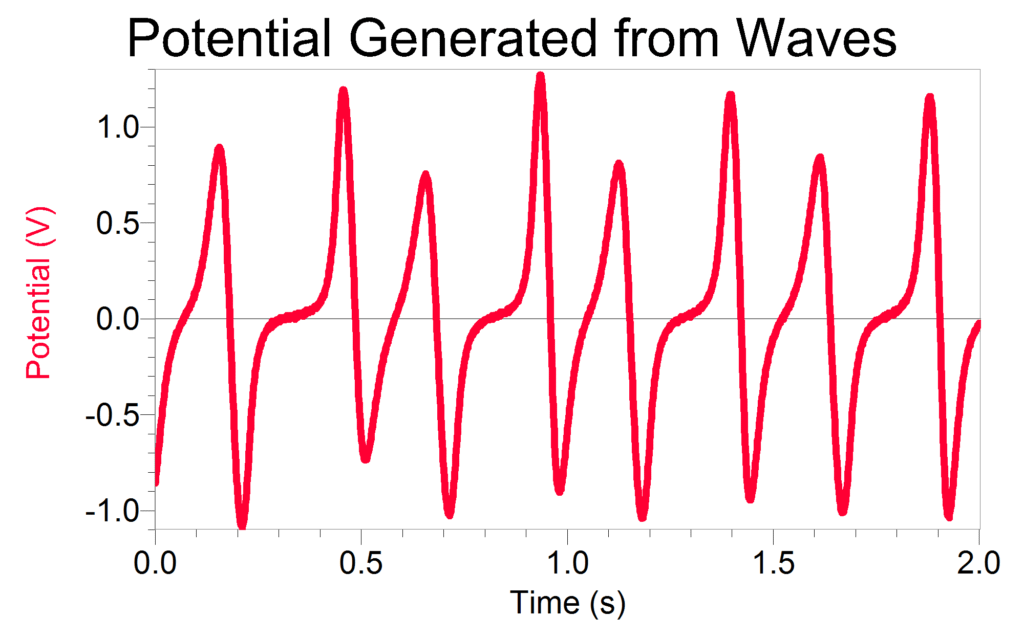The goal of the Wave Energy Program at Hatfield Marine Science Center (HMSC) in Newport, Oregon is to introduce and educate the public on how ocean waves can be used to generate electrical energy. As part of the Oregon Coast Regional STEM Hub, HMSC has developed wave energy curriculum modules that include wave energy kits. These modules and kits are used in K–12 classrooms across the state.
The wave energy kits developed by HMSC allow students to get hands-on experience with a STEM project. Using these kits, they design, develop, and test a wave energy generator in their classroom. Once they have a generator built and optimized, the students then travel to HMSC to test it in their wave tanks. The large wave exhibit in the HMSC Visitor Center includes a pair of 5 meter wave tanks with computer-controlled wave makers. These wave makers can produce consistent, repeatable waves from 10 cm to 19 cm high, with periods from 0.5 to 1.5 seconds. This allows students to test their wave generator and to study the optimal type of wave needed to produce electrical energy.

Initially, HMSC was having problems measuring and displaying the output from the experimental wave energy generators built by students. They could not use standard digital multimeters (DMMs) because the voltage output from each generator coincides with the frequency of the waves being generated, which is 3–5 Hz. The slowly oscillating signals were too fast to be measured with the DC settings on a DMM, and yet they were too slow to be measured with the AC settings. HMSC found that a digital oscilloscope could work well, but it was difficult to set up, since the voltage output from a student generator could vary from 0.01 V to over 1 V. HMSC contacted Vernier and told us about the challenges they were facing. They needed something that was intuitive to use and could autoscale the data being generated. In addition, HMSC wanted to demonstrate the wave generators to large crowds of visitors and students. The solution was to use a Vernier Voltage Probe, a LabQuest 2 connected to a computer, and Logger Pro software to get the job done. HMSC now has a great way to measure, analyze, display, and teach students about harnessing ocean wave energy through STEM.
